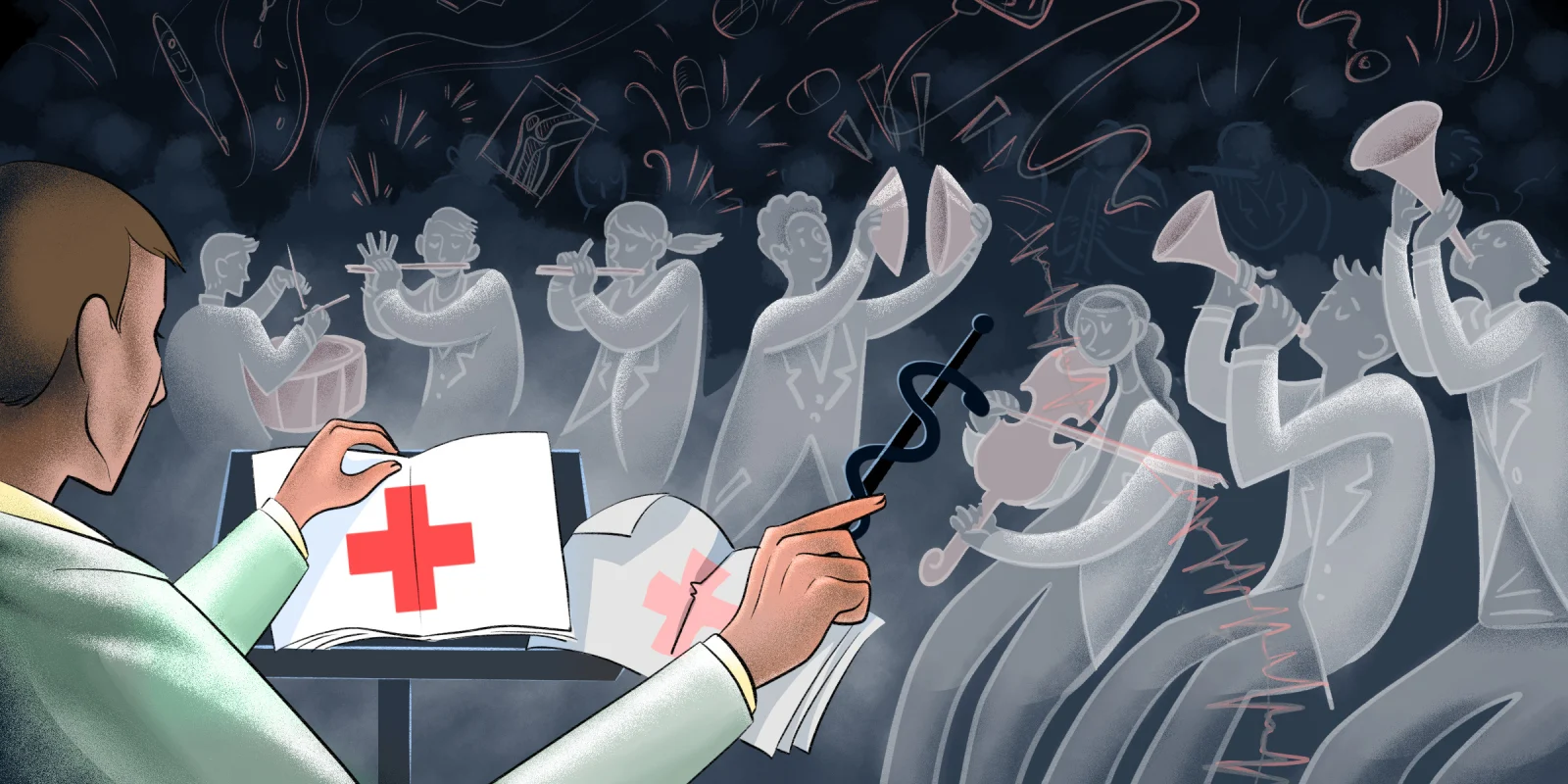“Level I trauma, five minutes,” the operator’s voice boomed through the ED. “Alright,” I thought to myself, “time to prepare the trauma bay.” With every trauma or critical patient that came into our department, I set up everything for vitals, cardiac monitoring, the works.
The charge nurse briskly entered the room while I performed my pre-trauma routine. “This is a trauma code, Austin. We need the crash cart ready.” She then gave orders to the nurses in the room to get chest tubes set up, suction ready, and for all of us to get gowned.
In a minute, the room was filled — the trauma surgeon, emergency physician, nurses, respiratory therapists, and my fellow ED technicians. It was time. EMS rolled in with the LUCAS device pounding away at just over 100 beats per minute on a young man’s chest. He had been mangled by a vehicle whose driver did not see him on his motorcycle. We moved him to our cot. I took off the LUCAS device as the surgeon ordered and immediately started compressions.
Performing CPR was a surreal experience. I felt like I was back in my high school orchestra playing violin, where the techs and nurses were the violinists and violists. The respiratory therapists were the cellists. The surgical team, the bassists. The trauma surgeon and emergency physician were conducting us all in harmony. IVs went in, a chest tube was being inserted right under me, and pads and electrodes were placed on the man’s fractured torso. The surgeon yelled for a thoracotomy tray. Swiftly, she cut open the chest cavity, clamped the aorta, and told me to stop compressions. She started to massage the man’s heart with her gloved hands. After what felt like hours, the surgeon stopped the cardiac massage, called the time of death, and the orchestra fell silent. My first trauma code ended in barely 10 minutes, yet those pivotal moments had the most impact on my decision to pursue a life practicing medicine.
I started working in EMS when I was 20 years old. My university offered an EMT course through the pre-health fraternity, of which I was a member. As a first-generation student exploring my academic options, I discovered I had a passion for science and health. I enrolled in the EMT course in order to explore my interest in the health field. Seven months later, I started my first full-time night-shift job with a private ambulance company in Orlando, Florida, while balancing a full-time course load during my junior year at Stetson University. Shortly after starting the job, my interest in the field of medicine began to grow. I discovered that I enjoyed taking care of people. I came to realize that caring for my community was a nascent interest and passion of mine, and I decided that it needed to be a part of whatever career I chose.
I decided to take the next step. Within half a year of working on the ambulance, I was hired as a technician in the ED. I wanted to discover what medicine was like in the hospital setting rather than on the truck. The ED was a totally different experience. It was unlike anything I had managed in the field. Taking care of patients for longer than 20 minutes was new to me, but it was an experience that I was eager to take part in. Over the next 14 months, I spent every Friday, Saturday, and Sunday night in the ED, working alongside and learning from nurses, advanced practitioners, and physicians alike.
After graduating from Stetson University, my fiancée (now wife) and I moved to Phoenix, Arizona. I started working in the aforementioned Level I Trauma center a week after getting settled into our new home. It was during my time working in Phoenix that I learned something important about myself. After spending thousands of hours caring for patients, learning from clinicians, and discovering my love of medicine, I felt the need to maximize my skills and knowledge to care for my patients to the best of my abilities. Throughout the years, I have been able to work alongside physicians that were able to ease human suffering through their vast experiences, practice, and problem-solving abilities. I desired to help the people in my community in the most knowledgeable, skilled, and efficient way possible, just as the physicians that I have learned from. I committed to a life of learning and practicing in the continually advancing field of medicine to better care for my patients. I committed to taking on the challenge of improving the lives in my community. I committed to healing the pain of mankind and serving my patients in every way I know how.
The final 10 minutes in that young man’s life were the most influential in mine. I am grateful that I was able to discover my life’s purpose while working alongside a team of dedicated clinicians. In a span of time that felt like hours, with an orchestra performing around me, I realized that it was my dream to no longer be the violinist but to become the conductor.
What moment spurred your life in medicine? Share your story below.
Austin Miller is a second-year medical student at the Ohio University Heritage College of Osteopathic Medicine. He is President of his campus’s American Medical Student Association, National Liaison Officer for the Student Osteopathic Medical Association, and an executive board member of Sigma Sigma Phi National Honorary Osteopathic Service Fraternity Lambda Chapter in Dublin, Ohio.
All names and identifying information have been modified to protect patient privacy.
Illustration by April Brust







